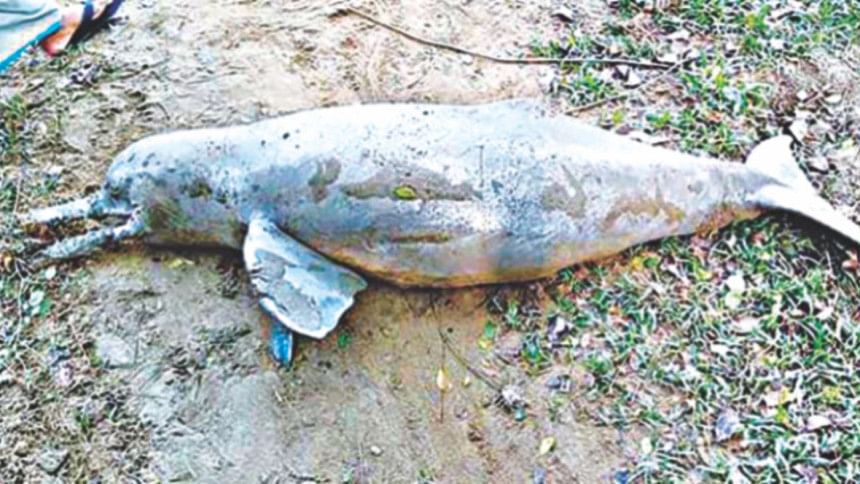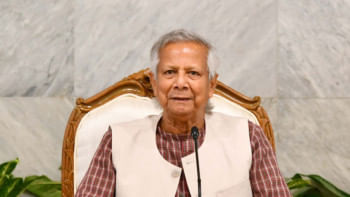Man-made trauma behind Halda dolphin deaths

Trauma and inanition (exhaustion caused by a lack of nourishment) due to injuries rendered by engine-run boats, speedboats or dredgers in the Halda river accelerated the deaths of at least 18 dolphins (Platanista Gangetica).
The aquatic mammals died in the six months from September 2017 to February this year, according to a new report.
A seven-member committee formed by the livestock ministry in February came up with the findings. The probe body submitted its report to the ministry yesterday.
The committee collected the organ samples of the dolphins from Halda River Research Institute on March 3.
It found necrosis (death of cells in an organ due to injury) and hemorrhage marks in the musculature of the left chest of the body of dolphins in the postmortem. Such postmortems were done for the first time in the country.
Due to plying of dredgers and engine-run boats, the aquatic mammals fail to navigate through their corridors as their movements are obstructed and they often sustain injuries. As a result, their sensory systems get affected and they fail to search for food.
Dr Abu Hadi Nur Ali Khan, a professor of pathology department at Bangladesh Agricultural University, said the injury marks on the dolphins' body, believed to be caused by sharp instruments like propellers or blades, were found in the fins and chests of six dolphins examined at the lab.
“Those injuries left them unable to navigate through the river because they suffered from a sensory loss due to the injury,” said Dr Abu Hadi, also a member of the committee.
The mechanised vessels are responsible for that, he said. “However, there weren't any more deaths since February as plying of those vessels was stopped by the administration,” he added.
Dolphins are mammals and breathe air into their lungs. Dolphins cannot breathe under water like fish can as they do not have gills. Dolphins breathe through a nostril, called a blowhole, located right on top of their heads.
They sustained the injuries when they came to the surface of the river water to breathe, he said.
Due to the injuries, their sensory system does not function properly, and they are unable to locate fish. This result in exhaustion caused by a lack of nourishment, which finally results in their death, he added.
Dr Masud Hossen Khan, chief scientific officer of Bangladesh Fish Research Institute, said pollution in the Halda had not reached a level that could cause the deaths.
“In our research, we came up with the decision that the mechanised vessels plying the river and the injury sustained due to those vessels resulted in their deaths,” said the chairman of the investigation committee.
Manzurool Kibria, a professor at zoology department of Chittagong University, and also a member of the investigation team, told The Daily Star that the authorities took an initiative to save the brood fish in the Halda. “It is now time to focus on dolphins.”
“No initiative has been adopted as of today to protect the endangered dolphins. We must do something to save these species, internationally enlisted by IUCN as endangered.”
The committee also made six recommendations in their report that include a ban on dredgers and mechanised boats, a ban on using current nets and exercising a strict law to stop industrial pollution.
The recommendations also include creating awareness among people living on the riverbanks, rectifying the existing fisheries law to protect the dolphins and conducting researches for finding a way to increase their numbers.

 For all latest news, follow The Daily Star's Google News channel.
For all latest news, follow The Daily Star's Google News channel. 



Comments